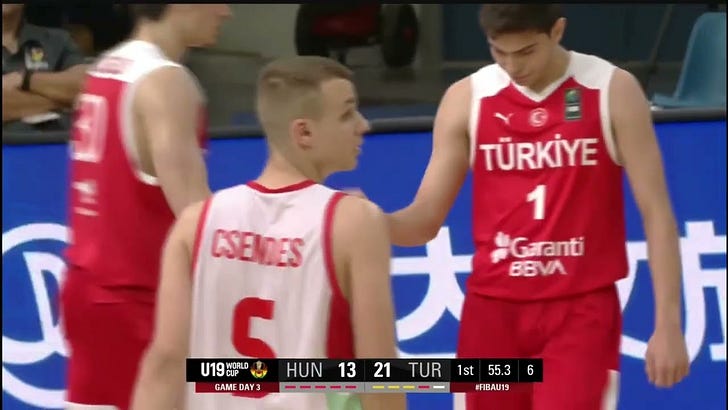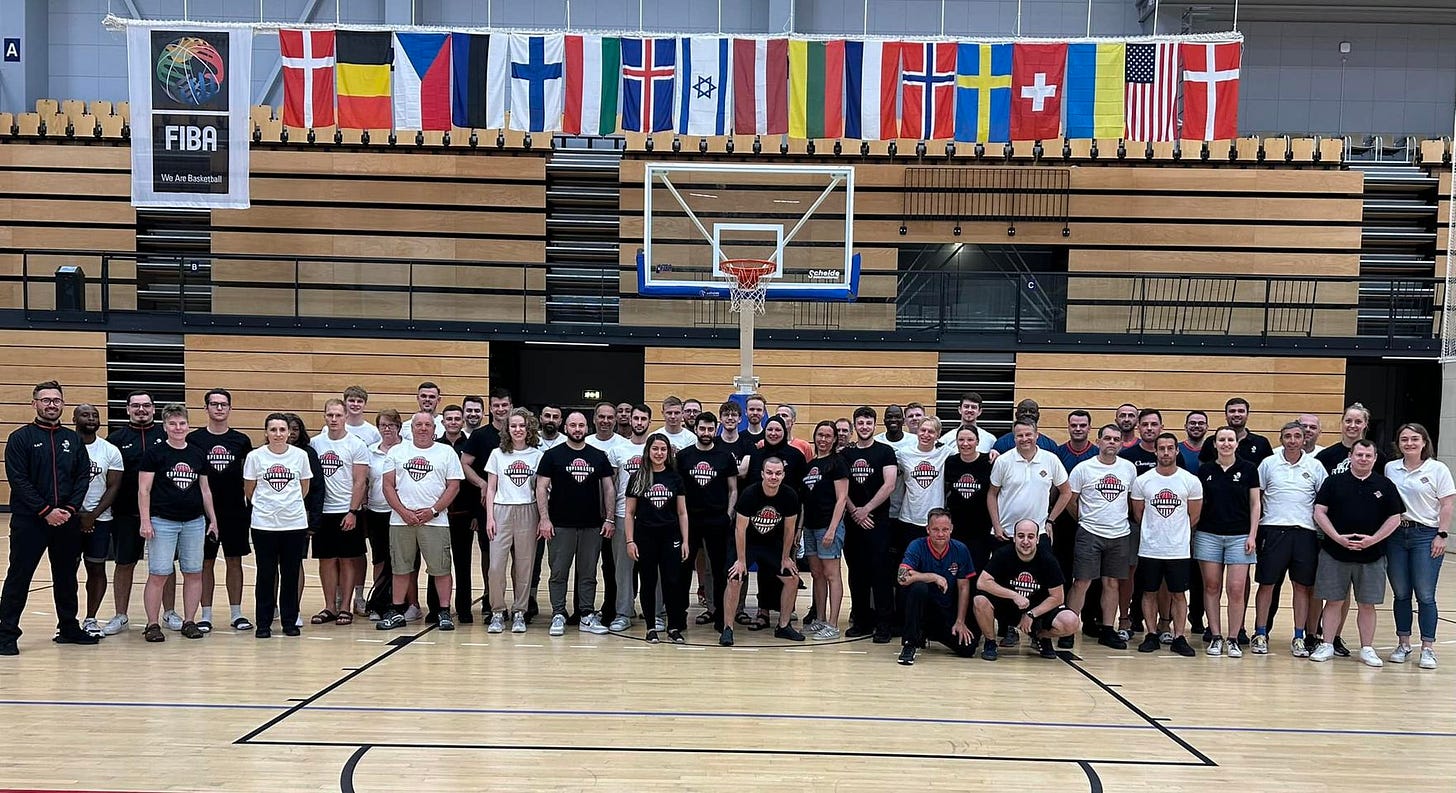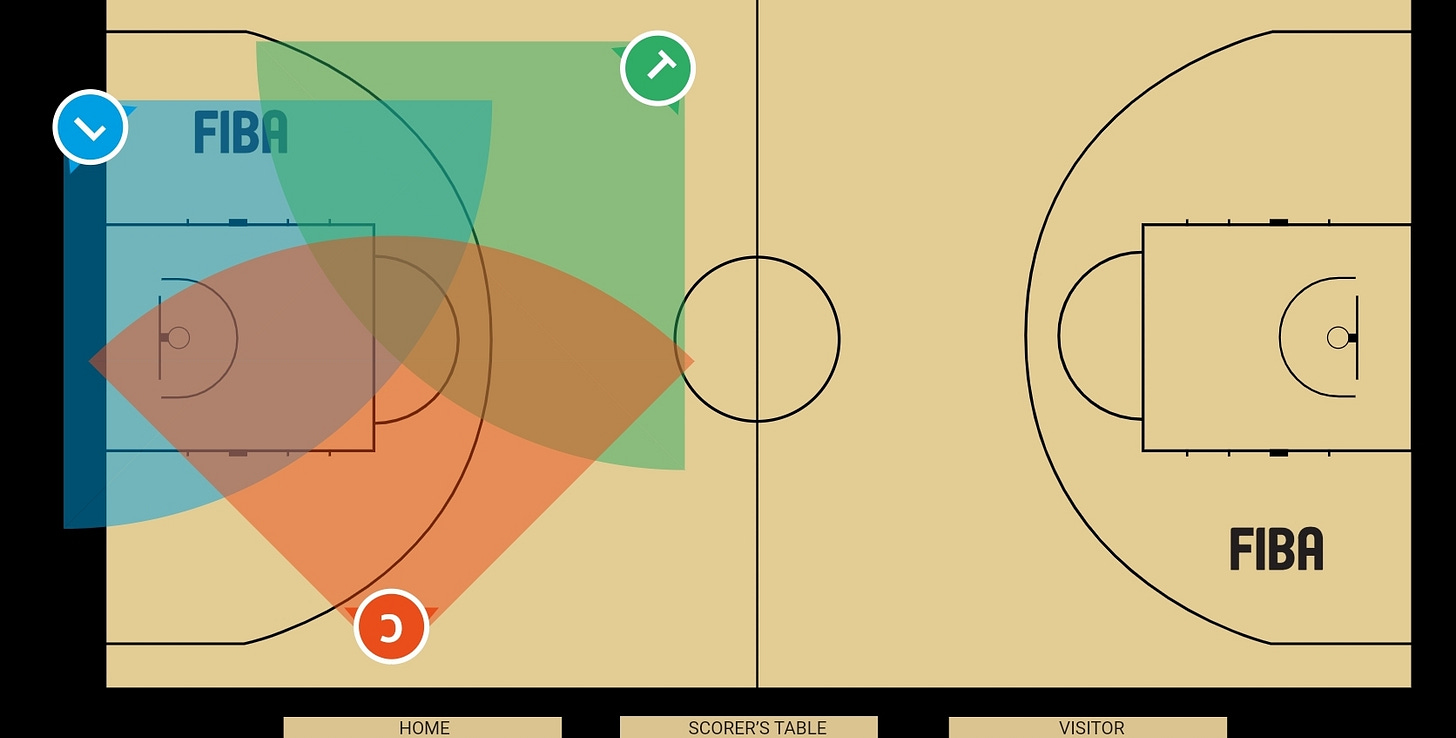Three-Person Officiating(3PO) - Most Common Mistake even for Expert Refs
A German Research revealed where even expert referees deviate from the FIBA Guidelines. You will find practical tips and AOR case examples from U19 World Cup in this edition.
In modern basketball officiating, Three-Person Officiating (3PO) has gained prominence. This system divides the referees' areas of responsibility into three sections: the Lead, the Center, and the Trail. Each position has specific guidelines to evaluate game situations effectively.
Copenhagen Invitational Tournament and the Referee Clinic
Copenhagen Invitational is an exclusive basketball tournament for developing National team talent in U13 to U15 age range that took place on June 15-18th. The tournament is recognized internationally by FIBA as one of the best youth tournaments benefitting the development of National team players, coaches, and referees. I participated 2023 edition of "Copenhagen Invitational Referees 3PO Clinic” alongside more than 60 referees from about 15 countries. Since games are youth games, there is a good opportunity to work on 3PO mechanics.
Leveling up from Two-Person Officiating (2PO) to 3PO comes with its specific challenges, the number of rotations between referees increases exponentially more being one for example. Areas of responsibility also change as a third referee is introduced. Throughout CPH Invitational, referees had a chance to apply the theoretical knowledge acquired in the learning sessions on the court, all while receiving close to real-time feedback from the instructors.
Tips on AOR and Gaze based on a research with German Referees
In the Three-Person Officiating (3PO), ball-watching becomes an even more pressing concern compared to the Two-Person Officiating (2PO). As areas of responsibility shrink for each referee, it becomes increasingly important to resist the temptation of fixating solely on the ball. As a matter of fact German Researchers studied the referee’s gaze and positioning during 3-point shots in 3PO. 9 basketball referees took part in the research, who actively refereed in German second and first division. Gaze data collected via mobile eye tracking device during three pre-season games of German top flight teams. The data then compared the duties and areas of responsibilities of each referee during a shot attempt behind the perimeter to asses the deviations.

I read the paper and here are some of the findings and practical recommendations:
Be mindful of your positioning: Research found out that when positioned far away from the shot attempt, referees become more vulnerable to “ball watching” Pay extra attention to AOR when you are positioned away from the shot attempt.
Coordinate a balanced gaze as a TEAM: Another finding from the study was that gaze of two referees was almost never directed at the same aspect of game action with certain exceptions. Expert referees demonstrated remarkable ability in distributing their gaze as a team, effectively covering multiple aspects of the game action.
Utilize peripheral vision(PV): While the study did not specifically analyze peripheral vision, researchers argue that concentrating on the central position of the AOR made it an ideal gaze anchor, based on the gaze analysis of the expert referees. PV can increase the situational awareness beyond the AOR, while maintaining coverage in your primary.
Example Situations
Adherence to 3PO AOR guidelines can minimize the double or triple calls (where 2 or 3 referees simultaneously whistle). Trust between the crew is also essential. This means giving time for the referee who has the action in their primary coverage area to make the call. However, even then double calls happen. There areas on the court where AORs overlap, for example. Below there are two examples of double call situations from FIBA U19 World Cup.
What do you think is happening here? 👇
Double Call Trail & Center
Double Call Narrowly Avoided Lead & Center





